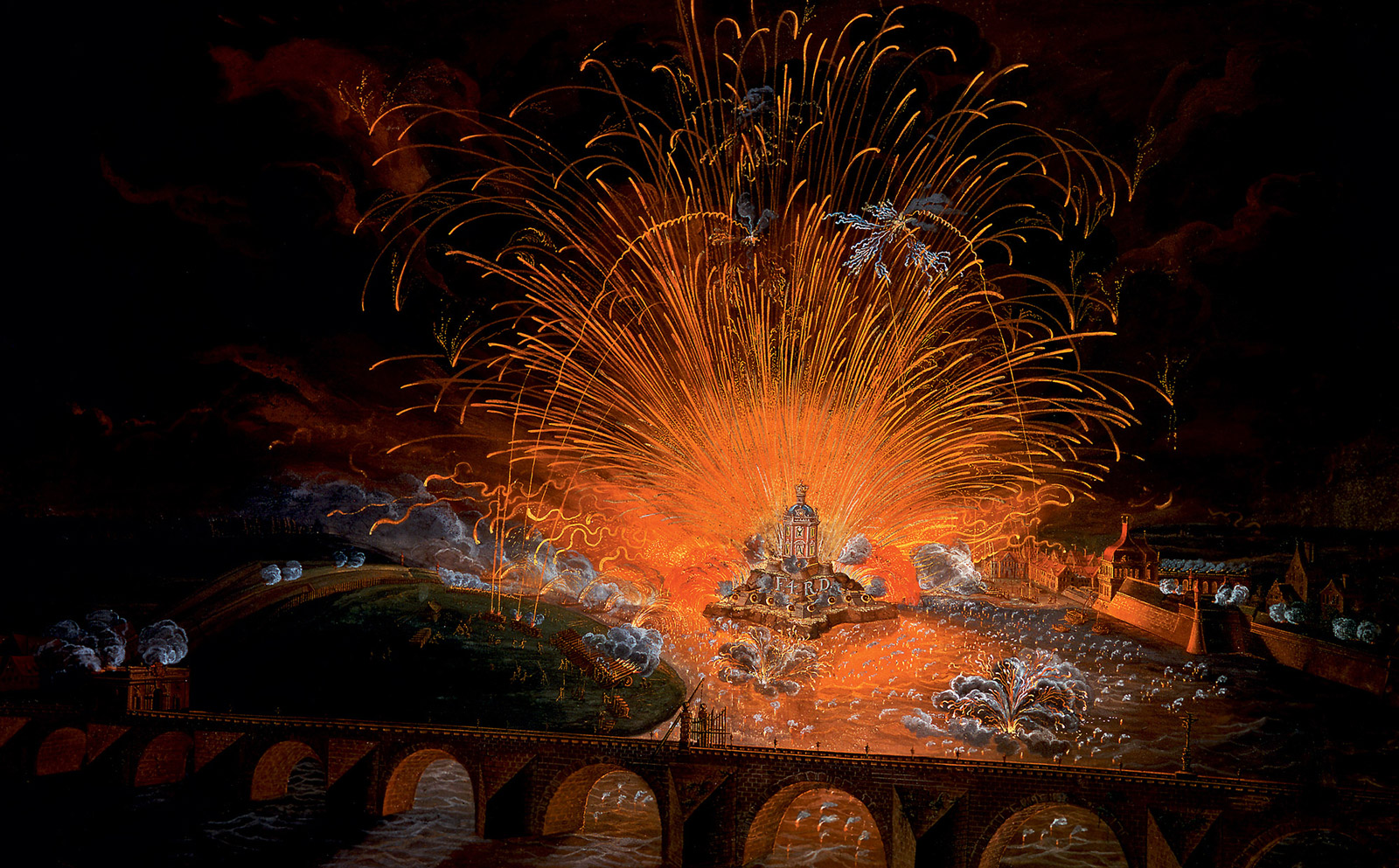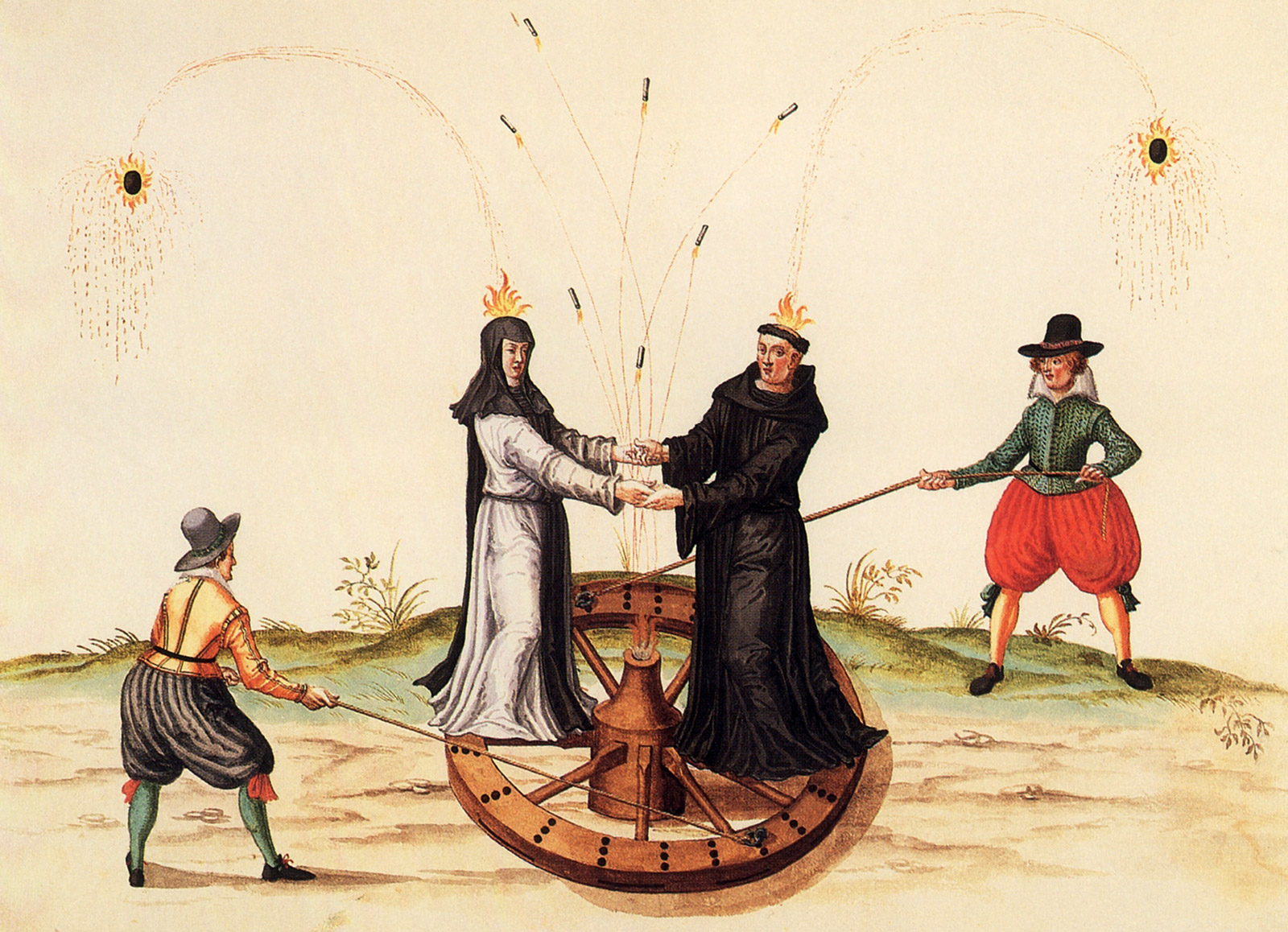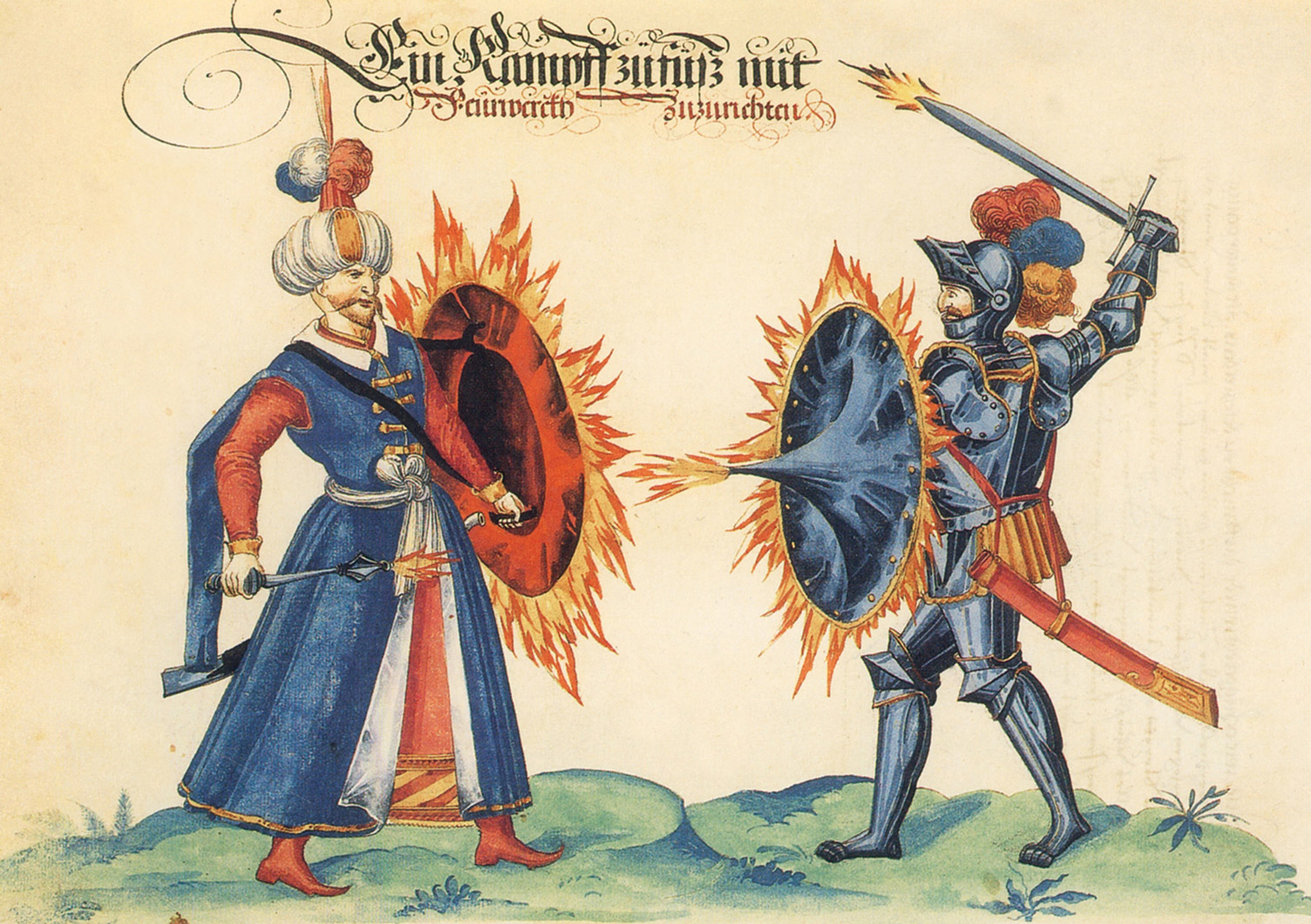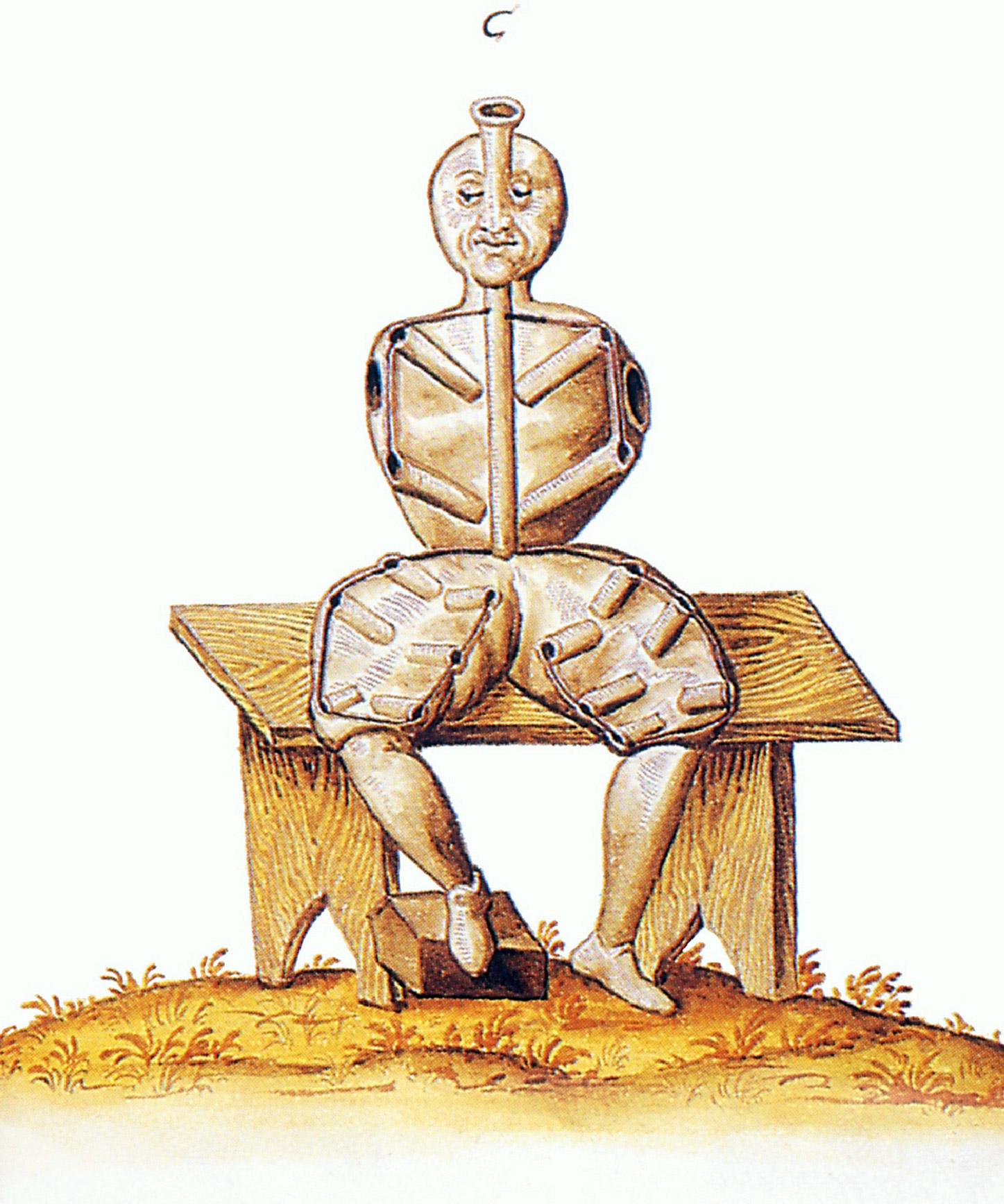Sparks of Life
Fireworks and physiology
Simon Werrett

“I collected the instruments of life around me, that I might infuse a spark of being into the lifeless thing that lay at my feet…By the glimmer of the half-extinguished light, I saw the dull yellow eye of the creature open; it breathed hard, and a convulsive motion agitated its limbs.”[1] Thus the magic moment in Mary Shelley’s Frankenstein (1818) when the creature is brought to life by what is usually considered (though Shelley does not say so outright) the infusion of an electric “spark of being” into a constructed body. Shelley’s story emerged amid heated disputes among London physicians over the nature of life itself. Against the view of mechanists and materialists, who argued life could be reduced to the complex organization of physiology, vitalists asserted that some other force or spirit must be superadded to bodies to achieve living animation. Vitalist John Abernethy thus declared, “The phaenomena of electricity and of life correspond.”[2]
To support their case, vitalists often pointed to the “animal electricity” described by Bolognese physician Luigi Galvani, who had seen the legs of a dissected frog twitch when touched with a metal scalpel in the presence of electricity. Another Italian, Alessandro Volta, rejected Galvani’s claim that such animal electricity was a distinctive form of electricity, and simulated it by bringing different metals into contact in moisture, thus contributing to his invention of the “voltaic pile” or battery. Volta’s experiments troubled vitalist accounts, but dramatic experiments supported them. In London in 1803, and again in Scotland in 1818, experimenters charged the bodies of dead criminals with electricity to witness astonishing convulsions and spasms, suggesting electricity was essential to life: “[E]very muscle in his countenance was simultaneously thrown into fearful action: fear, horror, despair, and ghastly smiles, united their expression in the murderer’s face, surpassing far the wildest representations of a Fuseli or a Kean.”[3]
That the electric “spark of life” figured prominently in debates over the nature of life in the late eighteenth and early nineteenth centuries is well known. Less well known is the fact that prior to this period, gunpowder was often identified with the substances that were necessary to life, if not as a vitalistic spirit, then as an essential element in the animation of the body. The idea of a spark of life went back to ancient times, likening living beings to the glowing embers of a fire. In the Old Testament, for example, the wise woman of Tekoah begs for the life of her son, pleading “they will stamp out my last live ember.”[4] But from the sixteenth to the eighteenth century, this vital flame was often equated with gunpowder. There was fire in the blood: not electric, but pyrotechnic fire.
The ancients knew that air was necessary to both combustion and respiration. They combined both processes in the term flamma vitalis, the “vital flame” or “flame of life.” Aristotle identified the heart as the center of the body’s warmth, the place where “the soul is set aglow with fire.”[5] By the sixteenth century, as European science was being transformed through engagement with flourishing princely courts, the flamma vitalis entered a complex moral economy of fire. Balthasare Castiglione, in his Book of the Courtier (1528), identified the appropriate behavior of courtiers with the management of the fiery desires, passions, and appetites that ignited in the body.[6] Vannoccio Biringuccio described the burning fire of love in Pirotechnia (1540) as “the fire that consumes without leaving ashes.”[7] Alchemists, magicians, and proponents of the new mechanical and experimental philosophies sought a deeper comprehension of these mysterious life-giving fires, and inquired into the nature of combustion and the role of breathing. Gunpowder, with its volatile ingredients of niter (also known as saltpeter, and today as potassium nitrate: a white, powdery mineral) and sulfur (a lemon-yellow crystal), offered the principal model for comprehending these processes.
In late seventeenth-century England, a physician named John Mayow presented an argument that what he called “nitrous” and “sulphureous” particles could account for a huge array of phenomena in the universe. Mayow, an Oxford graduate and Fellow of the Royal Society, claimed that “nitrous particles,” similar to those making up mineral saltpeter, formed a part of the air (previously thought to be an homogenous element). When a body burned, its sulfurous parts reacted with this “nitro-aerial spirit” in the air to give off heat. The reaction used up nitrous particles in the air, and unless a fresh supply of air were available, eventually the burning would cease when all the “aerial nitre” was exhausted.
Mayow conducted ingenious experiments to extend this explanation to physiological processes. He compared the processes of burning and breathing, arguing that nitrous particles in the air were also necessary to respiration. In order to demonstrate this hypothesis, he lowered into a vessel of water a bell jar containing a small animal suspended above the water inside a cage. Initially, the water level was the same inside and outside the jar but as the animal breathed, the level of water rose in the jar, indicating that air was being used up—about one-fourteenth of the total volume.[8] A similar effect was seen when camphor was burned inside the jar. If both a burning candle and an animal were placed in the jar, the animal did not live long after the candle went out, because, reasoned Mayow, “the air enclosed in the glass is in part deprived of its nitro-aerial particles by the burning … hence not only the lamp but also the animal soon expires for want of nitro-aerial particles.” Mayow thus established for the first time that part of the air was used in respiration, and this was the same part consumed by fire.[9]
Mayow extended his “gunpowder” explanation of physiology to many other matters, earthly and cosmological. He explained that nitrous and sulfurous particles were “engaged in perpetual hostilities with each other” and from their struggle arose “by turns all the changes of things.”[10] His work probably influenced the young Isaac Newton, whose alchemical studies included a keen interest in vivifying spirits circulating through the universe (a model for his later ideas of universal gravitation). But Mayow was not alone in propounding these ideas, and others extended his “nitro-sulphureous” theory to different aspects of physiology.
Another physician, the Oxford fellow Thomas Willis, proposed that nitro-sulphureous particles might explain the action of the muscles. Scholars knew that muscles moved through contraction, but did not understand how this contraction occurred. Willis proposed a “gunpowder” explanation. The act of breathing, he claimed, introduced aerial niter into the bloodstream, where it combined with sulphureous particles to produce nitro-sulphureous particles. When arteries carried this nitro-sulphureous blood into the muscles, it met with “animal spirits,” or a nervous fluid, to produce an “explosion”: the particles “suddenly intumified, they, as if inkindled, are exploded.” The nerve acted as an ignition mechanism, controlled from the brain, producing “the fiery inkindling or the match … [to] blow up the Muscle.”[11] Human movement thus depended on pyrotechnics in the blood.
What were the sources for this gunpowder physiology, this pyrotechnic vision of the flamma vitalis? Some historians suggest that sixteenth-century alchemists began the equation of living spirits with “aerial nitre,” a symbolic relationship that gradually became more physical and mechanical during the seventeenth century. The “philosopher’s saltpeter” thus appeared in the work of Polish alchemist Michael Sendivogius as a symbol of growth, by analogy to the way niter grew out of the earth like a mossy plant. At the beginning of the seventeenth century, followers of the German physician and alchemist Paracelsus equated the flamma vitalis with a more material substance, an “aerial sulfur,” a “fyre which nourisheth and quickeneth mans body.” Paracelsus also described an aerial niter that nourished the muscles via the lungs, and his followers developed the idea and applied it to other phenomena.
Another important resource for the gunpowder theory was meteorology, because many forms of weather were thought to be caused by explosions in the sky analogous to the explosions of gunpowder. In the century before Benjamin Franklin showed that lightning was electricity, aerial niter and sulfur, brought together into an explosive mixture, provided a convincing account for the flash of lightning and rumble of thunder, in addition to a host of exotic “fiery meteors” illuminating early modern European skies.[12] Already by the late Renaissance, scholars had associated bodily pyrotechnics with these heavenly explosions because the human body was understood as a microcosm of the larger world. Thus the French Paracelsan Joseph du Chesne, writing in the first decade of the seventeenth century, explained thunder and lightning in terms of nitro-sulfurous causes, and then claimed that “[t]his Niter-Sulphurus stinke is that which manifestly causeth in us fiery meteors… which bringeth forth innumerable passions and paines.”[13]
There were also material sources for gunpowder physiology—most obviously gunpowder itself, which Mayow and Willis would certainly have had in mind when elaborating their theories of “aerial niter.” A seventeenth-century gentleman might have come into contact with gunpowder in a number of ways. Ordnance, or great cannons, had become commonplace in European cities since their introduction in the thirteenth century, and theories of meteors and muscle action often analogized the powers of nature and the human body with these devastating modern technologies. Mayow’s assertion that niter and sulfur were “engaged in perpetual hostilities with each other” reflected the prevailing view that thunderstorms and lightning were Nature’s version of an artillery battle in the heavens. Willis alternatively claimed some inspiration for his pyrotechnic view of muscle action from the French atomist Pierre Gassendi, who supposed a powerful and compact force was needed to move the “animal machine”: “Who can easily comprehend that small thing…within the body of an Elephant…that it should be able to agitate such a bulk, and to cause it to perform a swift and harmonious dance? But indeed, the same fiery nature of the soul, serves within the body by its own mobility, what a little flame of gunpowder does in a Cannon: it not only drives the bullet with so much force, but also drives back the whole machine with so great strength.”[14]
Equating the body with pyrotechnic artillery reflected another common reference in sixteenth- and seventeenth-century science—fireworks. “Artificial Fireworks” and the gunpowder theory of meteors and physiology grew up in Europe at about the same time. In the East, in India and China, gunpowder fireworks—rockets, wheels, squibs, and bombs—had been used for festivals and warfare since their invention by the Chinese sometime in the eleventh or twelfth century. Arriving in Europe in the fourteenth century, fireworks were used in battle, and occasionally in church dramas and royal pageants. By the sixteenth century, fireworks were a common element of courtly festivities across Europe. Princes hired gunners and artisans to design spectacular displays, whose dramatic effects of sparks, noise, and smoke were intended to make a terrifying display of the prince’s power over the formidable element of fire. Fireworks were shown for royal weddings and birthdays, to celebrate military triumphs, or to see in the new year: crowds gathered on riverbanks and city squares to watch the shows, which were often performed over water to heighten their effect.
The purveyors of these entertainments viewed their work as an imitation of the great fiery spectacles of the natural world, and for this reason they called their fireworks “artificial.” (Contemporary English has dropped this term, but the French still speak of feux d’artifice). Using “artificial fireworks,” gunners mimicked the natural fires of thunder, lightning, shooting stars, comets, suns, and volcanoes. A typically marvel-filled display in Elizabethan England showed “[a] blaze of burning darts, flying to and fro…streams and hails of fiery sparks, lightnings of wildfire on water and land, flight and shot of thunderbolts: all with such continuous terror and vehemency, that the heavens thundered, the waters surged, the earth shook.”[15] Fireworks imitated meteors as well, so it is not surprising that contemporary accounts explained the causes of natural meteors by analogy to the effects of gunpowder. As the English physician and author Thomas Browne put it in 1650, “Surely a main reason why the Ancients were so imperfect in the doctrine of Meteors, was their ignorance of Gunpowder and Fire-works, which best discover the causes of many thereof.”[16]
Fireworks were also used to imitate the human body in the late sixteenth and seventeenth centuries. The earliest festive fireworks in Europe were shown in theatrical settings, providing added drama to stage scenery in religious plays. Sparks crackled from papier-mâché; doves, representing the Holy Spirit, made to descend along a string before audiences. Flames issued from the figures of angels winched up into the air, or from the bodies of diabolical dragons and demons. As fireworks developed into an autonomous genre of didactic entertainment, they continued to be shown around stage scenery. Fireworks exploded above temples, arches, obelisks, and rocks made with painted canvas and wooden frame. Displays also included elaborate automata, or moving figures of humans, animals, giants, and monsters. The classical engineer Hero of Alexandria had shown how to make moving figures of human and animal bodies using pipes filled with water, and Renaissance grottos abounded with such devices, some of which inspired René Descartes’s startling proposal that man could be understood as a kind of machine. Gunners could now deploy pyrotechnics rather than water to bring their artificial creatures to life.
Around 1600, remarkable painted manuscript books were prepared for German princes, illustrating the many varied forms of human, animal, and monstrous figures that his artificers were capable of making. The illustrations testify not only to the skill of German artificers, but also to the playful and ingenious nature of these early pyrotechnics. One showed the life-sized figures of a monk and a nun erected on a wooden cart-wheel, which was made to spin by pulling on a rope around its circumference, sending the monk and nun into a whirling dance. Fires emanating from the monk and nun’s bodies show these figures were filled with fireworks. Other illustrations showed the manner of filling bodies with pyrotechnics. Inside human figures constructed of paper, cloth, and wood, a system of tubes was arranged to carry fireworks, which would erupt into gushing fountains of sparks when ignited. Two battling warriors, a Christian knight and a fighting Turk, could be attached to a long wooden beam or a firm rope and made to fly towards one another by rocket propulsion. Different treatises showed how the figures of St. George and the Dragon could be made to do battle in a similar manner, and suggested a variety of pyrotechnic devices to make bodies move with fireworks. The English gunner John Babington, whose displays may have been witnessed by Mayow and Willis, described making human figures from basket-weavers’ rods, which were weighted with sand to float upright in water, where they moved around by the action of hidden rockets.[17]


Pyrotechnic physiology, the thought that bodies move and live by the action of gunpowder-like particles exploding in the blood and muscles, proliferated in the context of such animated fireworks displays. Mayow cited mechanical bodies as an inspiration for his nitro-sulphureous theories: “W]e must suppose that the sulphureous and nitro-aerial particles…are fashioned by the supreme Artificer [i.e. God] with truly marvellous skill…as much skill…as in automata constructed with the most accurate human art.”[18] Fireworks, like fountains, were “machines,” and as the body came to be viewed as a machine so these mechanisms offered models for scientific theories. As Willis wrote, science benefited from “artificial things, from the Analogie of whose motions, in an animated body, both regularly and irregularly performed, most apt reasons are to be taken.”[19] The new mechanical philosophy, equating the body with a machine, also gave added urgency to the question of what animated the body: was life caused by the coming together of many mechanical parts, or was it something else, a force added to make those parts move and come to life?
Men of science in the age of Frankenstein were still debating these questions, but by the early nineteenth century the causes of muscle motion and animation in bodies were no longer equated with gunpowder but with electricity. Critics hastened the decline of the gunpowder theory by arguing that explosions in the body would be too uncontrollable to account for human movements. “What dominion could the Soul have over the Muscles…if they were agitated every moment by Squibbs or Crackers breaking within them? Certainly she could never moderate such violent and tumultuose explosions.”[20] Nevertheless, what might be called the “gunpowder paradigm” had lasted for some two hundred years before electric theories replaced it beginning in the mid-eighteenth century. Even then, fireworks continued to be associated with heated passions and sexual desire; the gunpowder theory, meanwhile, persisted within the parameters of early electrical research, which similarly set out to provide a comprehensive explanation for diverse phenomena including meteors, lightning, and human physiology. In the nineteenth century, the success of Shelley’s Frankenstein and new theories proposing an electric basis for nerve and muscle action secured an electrical image for the “spark of life.”; But for many years before, this spark was pyrotechnic.

- Mary Shelley, Frankenstein, ed. J. Paul Hunter (New York & London: Norton, 1996), p. 34.
- John Abernethy, An Enquiry into the Probability and Rationality of Mr. Hunter’s Theory of Life (London: Longman et al.,1814), p. 42.
- Andrew Ure, quoted in Iwan Rhys Morus, “Galvanic Cultures: Electricity and Life in the Early Nineteenth Century,” Endeavour, 1998, vol. 22, no. 1, p. 8.
- Samuel, Book II, xiv, 7, in The Revised King James Bible, with the Apocrypha, (Oxford & Cambridge: Oxford University Press & Cambridge University Press, 1989), p. 270; John Wycliffe, The Holy Bible, made from the Latin Vulgate by John Wycliffe and his Followers, eds. J. Forshall & Sir F. Madden (Oxford: Clarendon Press, 1850), rendered the translation “Thei sechen to quench my spark that is laft.”
- Gad Freudenthal, Aristotle’s Theory of Material Substance: Heat and Pneuma, Form and Soul (Oxford: Oxford University Press, 1995), p. 20.
- Baldesar Castiglione, The Book of the Courtier (London: Penguin Classics, 1976), pp. 294, 328, 340–342.
- Cyril Stanley Smith and Martha Teach Gnudi, eds., The Pirotechnia of Vannoccio Biringuccio (New York: Dover, 1990), p. 444.
- Mayow did not know carbon dioxide being breathed out by the animal was dissolving into the water.
- John Mayow, Medico-Physical Works (Edinburgh: Alembic Club Reprints, 1907), p. 76.
- Ibid., p. 35.
- Thomas Willis, “The Anatomy of the Brain,” in Dr. Willis’s Practice of Physick (London: 1684), pp. 105, 111.
- Royal Society fellow John Wallis, for example, explained how “Thunder and Lightning are so very like the Effects of fired Gun-Powder, that we may reasonably judge them to proceed from the like Causes. … Thunder and Lightning were a kind of natural Gun-Powder, and [gunpowder] a kind of artificial Thunder and Lightning.” See John Wallis, “A Letter of Dr. Wallis to Dr. Sloane, concerning the Generation of Hail, and of Thunder and Lightning, and the Effects thereof,” in Royal Society, Miscellanea curiosa, (London, 1705–1707), vol. 2, p. 317.
- Josephus Quersetanus, The Practise of Chymicall, and Hermeticall Physicke, for the Preservation of Health, trans. Thomas Tymme (London: 1605), Sig. Y. 4. verso.
- Thomas Willis, “Of Convulsive Diseases,” in Dr. Willis’s Practice of Physick, op. cit., p. 2.
- Robert Laneham, A letter whearin part of the entertainment vntoo the Queenz Maiesty at Killingwoorth Castl in Warwik sheer in this soomerz progress 1575 is signified (London: 1575), p. 16. (Note: the spelling has been rendered in modern English).
- Sir Thomas Browne, Pseudodoxia epidemica (London: 1672), p. 93.
- John Babington, Pyrotechnia (London: 1635), pp. 64–66.
- John Mayow, Medico-Physical Works, op. cit., p. 120.
- Thomas Willis, “Of Convulsive Diseases,” in Dr. Willis’s Practice of Physick, op. cit., p. 2.
- Walter Charlton, Three Anatomic Lectures (London: 1683), p. 99.
Simon Werrett is a historian at the University of Washington in Seattle. His book Philosophical Fireworks: Science, Art and Pyrotechnics in European History will be published by the University of Chicago Press in 2009.